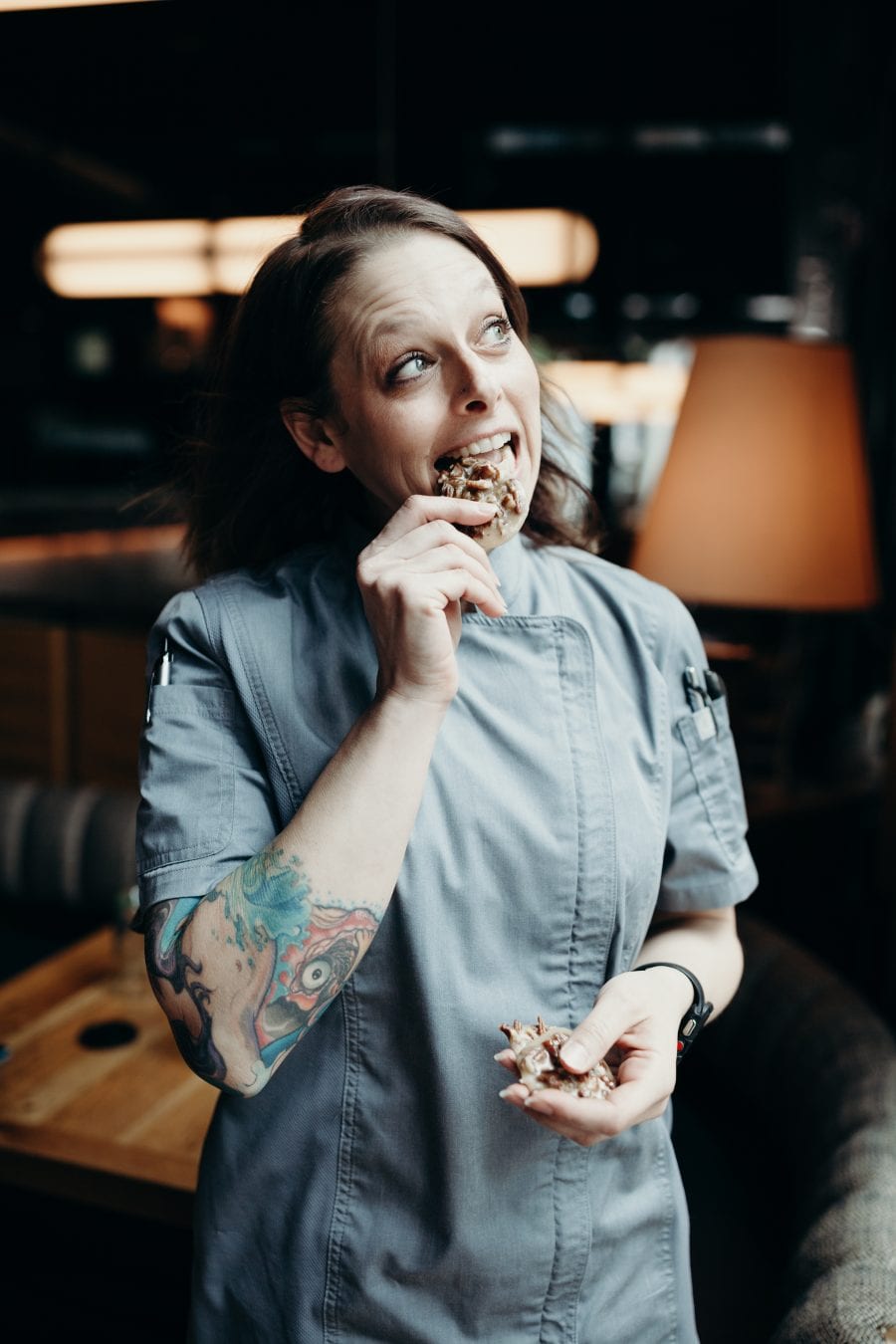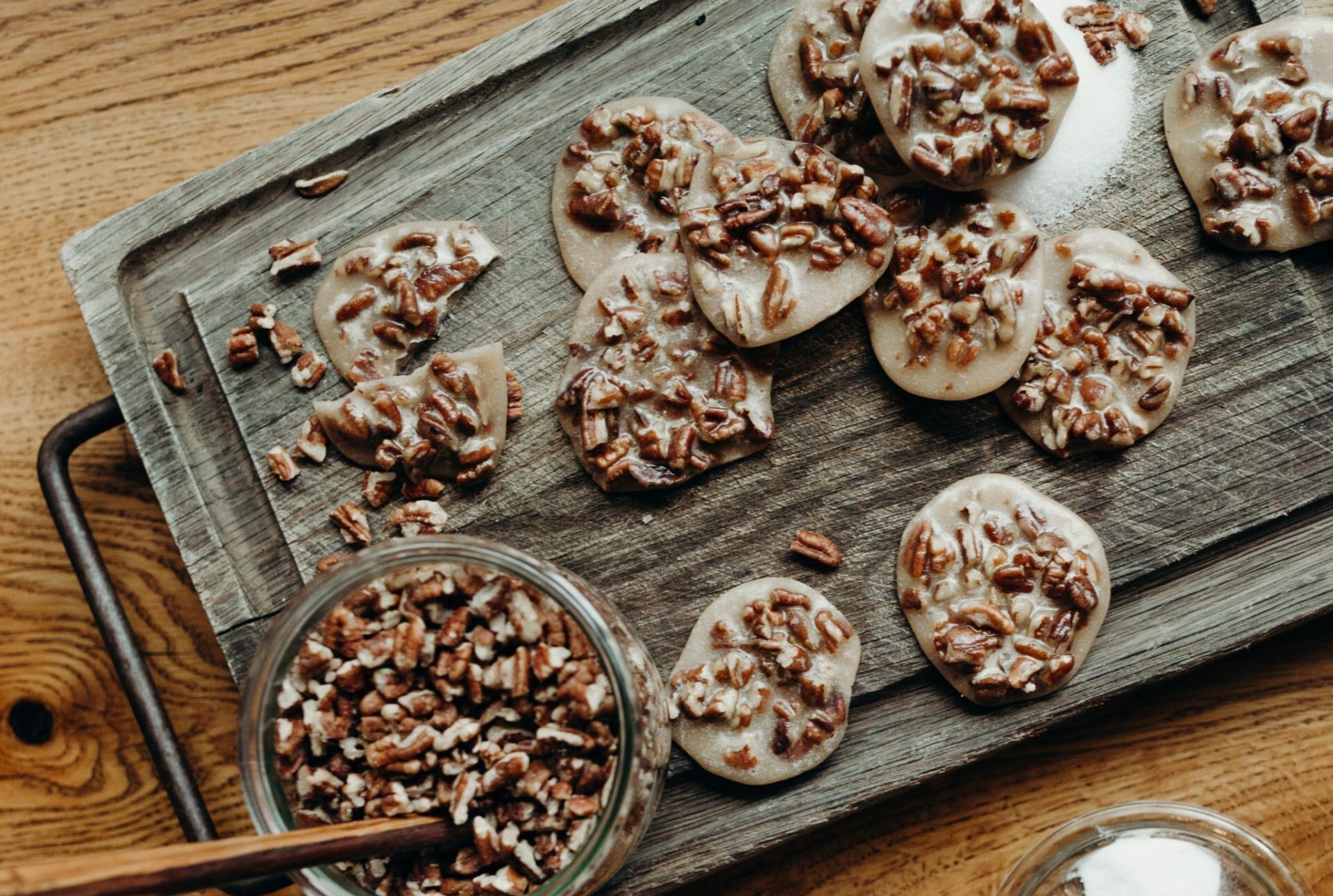Candy Land
A new look at a storied street food
Originally a French confection that arrived by way of New Orleans, pralines weren’t stateside for long before Southerners started putting their stamp on them. More specifically, says Southern food scholar Chanda Nunez, it was the “culinary genius of African-American women” who replaced France’s almonds with the region’s pecans and added a heavier helping of Louisiana sugar and milk to thicken the candy. They peddled pralines on the streets of the Crescent City as early as the second half of the nineteenth century; the nut-studded sweets represented a path to economic freedom.

But with sugar’s notorious reputation for burning at the drop of a hat, were the hawkers outfitted with handy thermometers to perfect their pralines? Not likely, says Chrysta Poulos, the pastry chef who whips up sweets for Ford Fry’s Atlanta-based restaurant empire. “One of the old-school ways to get your temperature was to use a spoon—you’d put it in the mixture and let it cool, then feel it in your hand,” Poulos says. If it was soft and pliable, the cook would know the caramel was ready.
Making pralines is an exercise in mis en place. “You need everything ready; there’s no time once your sugar starts cooking,” Poulos says. Indeed, it’s important to watch that pot— “It’s the cardinal rule not to walk away.” When they’re ready, make quick work of dropping the pralines while they’re warm. But if you miss that boat, fret not, Poulos says. Break the hardened batch into pieces to garnish other sweets or fold into ice cream.

Vegan Pecan Pralines
With the exception of tasting for work, Poulos keeps a vegan diet. Here, she shares a recipe that complies. “There are so many people who don’t do dairy for health or allergy reasons. This takes that component out,” she says. If pecans aren’t your favorite, any other nut can be used here.
share
trending content
-
New Restaurants in Arkansas
-
Shrimp and Grits: A History
by Erin Byers Murray -
Tea Cakes, A Brief History
by TLP Editors -
Gullah Geechee Home Cooking
by Erin Byers Murray -
A Cajun Christmas Menu
by TLP Editors
More From In the Field
-
From Pop-Up To Brick-and-Mortar | Listen
-
The Return of the Lynnhaven Oyster | Listen
-
What’s On the Horizon for 2024
-
Sorelle: La Dolce Vita in Vogue
-
Keya and Co. Turning Sadness into Sugar





